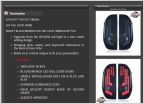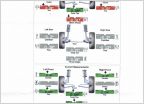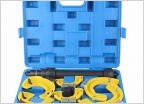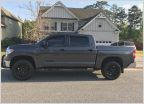-
Welcome to Tundras.com!
You are currently viewing as a guest! To get full-access, you need to register for a FREE account.
As a registered member, you’ll be able to:- Participate in all Tundra discussion topics
- Transfer over your build thread from a different forum to this one
- Communicate privately with other Tundra owners from around the world
- Post your own photos in our Members Gallery
- Access all special features of the site
Bilstein 6112 DIY Install
Discussion in 'Suspension' started by equin, Aug 14, 2018.


 Air bag helper springs
Air bag helper springs Old Man Emu Springs 2884 vs 2885
Old Man Emu Springs 2884 vs 2885 Alignment question
Alignment question 2018 Tundra - with 3/1 Ready Lift and Tires
2018 Tundra - with 3/1 Ready Lift and Tires Questions about 5100s, leveling and 1" lift
Questions about 5100s, leveling and 1" lift 3/1 Leveling Kit
3/1 Leveling Kit












































































